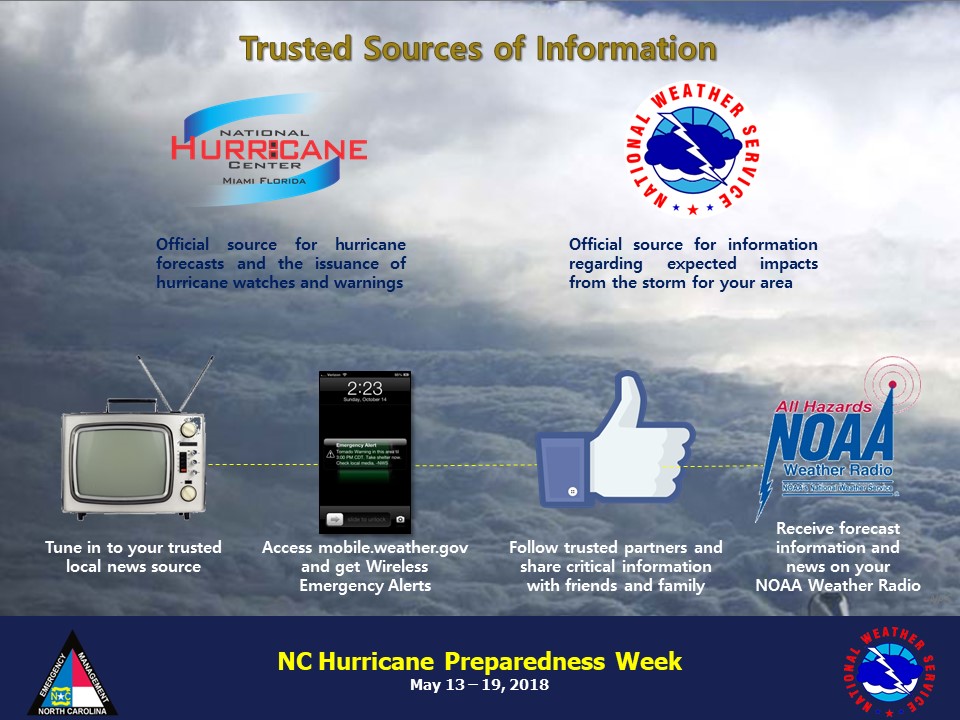The Office of Emergency Management & Planning encourages each student, faculty, and staff member to read the hurricane preparedness information on the National Weather Service in Raleigh website. The key to effective preparedness is knowing your local risks, developing a plan of action, and having a means of staying informed. Take advantage of our campus safety resources, registering for Alert Carolina, downloading the LiveSafe mobile app, and following the general safety tips, all accessible on our CarolinaSafe website.
The time to prepare is now!
All week long the National Weather Service will issue informative messages to help you prepare for the hurricane season. Today’s topics include rip currents, and identifying your trusted sources of information.
Rip currents are dangerous because they can pull people away from shore. Rip current speeds can vary from moment to moment and can quickly increase to become dangerous to anyone entering the surf. Rip currents can sweep even the strongest swimmer out to sea. Some clues that a rip current may be present include a channel of churning, choppy water, a difference in water color, a break in the incoming wave pattern, and a line of foam, seaweed or debris moving seaward.
If you find yourself caught in a rip current, stay calm and don’t fight the current. Escape the current by swimming in a direction following the shoreline. When free of the current, swim at an angle—away from the current— toward shore. If you are unable to escape by swimming, float or tread water. When the current weakens, swim at an angle away from the current toward shore. If at any time you feel you will be unable to reach shore, draw attention to yourself: face the shore, call or wave for help. Also, don’t become a victim while trying to help someone else! Many people have died in efforts to rescue rip current victims. Instead, get help from a lifeguard. If a lifeguard is not present, yell instructions on how to escape. If possible, throw the rip current victim something that floats. Call 911 for further assistance.
Organizations such as FLASH make disaster safety recommendations. And the media outlets will broadcast this information to you. All work together to be your trusted sources, especially for those less able to take care of themselves.
Here are some additional suggestions regarding where to get trusted tropical storm and hurricane information:
- Television: Tune in to your trusted local news source.
- Phone: Access mobile.weather.gov on your mobile phone and get Wireless Emergency Alerts.
- Radio: Receive forecast information and news on your NOAA Weather Radio.
- Social Media: Follow official government agencies, trusted media partners, and share critical information with friends and family.
- Computer: Access information from weather.gov, ready.gov, ReadyNC.org, and FLASH.org.



